Hercoles and Nesso by Giambologna
Hercoles and Nesso by Giambologna
The statue is situated under the priors lodge in Piazza Signoria; it was sculpted in the XVI century by Giambologna with the use of a monolith, one bloque of marble. It describes one of the "twelve Labours of Hercules". a theme we often admire in Florence: inside Palazzo Vecchio, in Palazzo Pitti, in Piazza Signoria, in Boboli). Hercules was an hero, in fact he was born from Zeus and Alcmena, for the half part he was a God and for the other one he was a man. For this reason he was adopted by kings, emperors and princes because they identified with the person who saved the world fighting against the enemies.
Giambologna perfectly depicts the strenght and the energy Hercules employs to kill Nesso: the animal is twisting and turning its body under the power of the hero. Its back is covered with the skin of Nemeo, the lion Hercules killed during his first challenge. Nesso is related to the death of Hercules: the centaur guided people from one coast to the other of the river Eveno. One day Hercules and Deianira, his wife, crossed to river but Nesso carried them separately. The animal tried to kidnap Deianira but Hercules killed it with an arrow. The centaur had the time to trick the woman suggesting her to pick up some blood and mix it with some drops of perfumed oil. Through this magic potion Hercules would have ever betrayed her. Deianira did so. After a few years Hercules wore a cloth on which his wife had squirted the terrible potion: the arrow with the blood of Nesso had infected the potion!
Even Dante in his Comedy remembers Nesso, look at the Hell: XII, 67-69! The great poet speaks about Nesso, "the animal able to revenge its death".
Niccolò Machiavelli in "the Prince" (1513), a treaty which deals with politic and describes the different methods to conquer and safeguard princedoms, makes use of a centaur to describe how a perfect government should be: "....human, but savage and violent if necessary". A great governor needs intelligence but also energy and force to be at the head of a princedom. In fact, a centaur is partially a man and partially an animal, the comparison is perfect!
Giambologna perfectly depicts the strenght and the energy Hercules employs to kill Nesso: the animal is twisting and turning its body under the power of the hero. Its back is covered with the skin of Nemeo, the lion Hercules killed during his first challenge. Nesso is related to the death of Hercules: the centaur guided people from one coast to the other of the river Eveno. One day Hercules and Deianira, his wife, crossed to river but Nesso carried them separately. The animal tried to kidnap Deianira but Hercules killed it with an arrow. The centaur had the time to trick the woman suggesting her to pick up some blood and mix it with some drops of perfumed oil. Through this magic potion Hercules would have ever betrayed her. Deianira did so. After a few years Hercules wore a cloth on which his wife had squirted the terrible potion: the arrow with the blood of Nesso had infected the potion!
Even Dante in his Comedy remembers Nesso, look at the Hell: XII, 67-69! The great poet speaks about Nesso, "the animal able to revenge its death".
Niccolò Machiavelli in "the Prince" (1513), a treaty which deals with politic and describes the different methods to conquer and safeguard princedoms, makes use of a centaur to describe how a perfect government should be: "....human, but savage and violent if necessary". A great governor needs intelligence but also energy and force to be at the head of a princedom. In fact, a centaur is partially a man and partially an animal, the comparison is perfect!
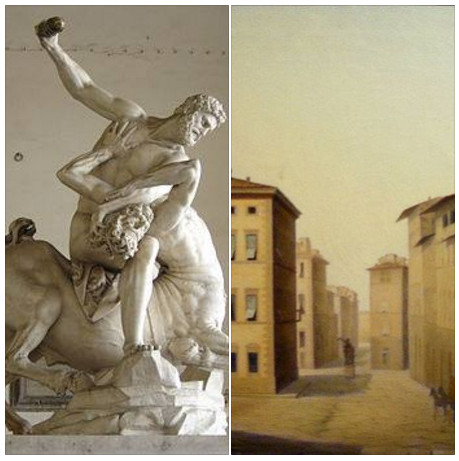
Giambologna, Hercules and Nesso, Piazza Signoria.
A painting by Fabio Borbottoni shows where the statue was situated during the Medici period, that is in the actual Canto de' Carnesecchi.
A painting by Fabio Borbottoni shows where the statue was situated during the Medici period, that is in the actual Canto de' Carnesecchi.
Altri articoli
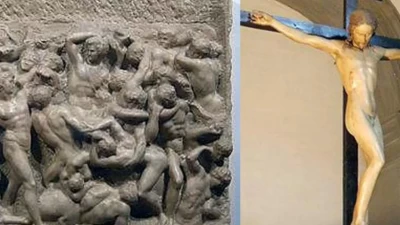
Michelangelo and his friend Lorenzo il Magnifico
Christ is represented here as a young man!
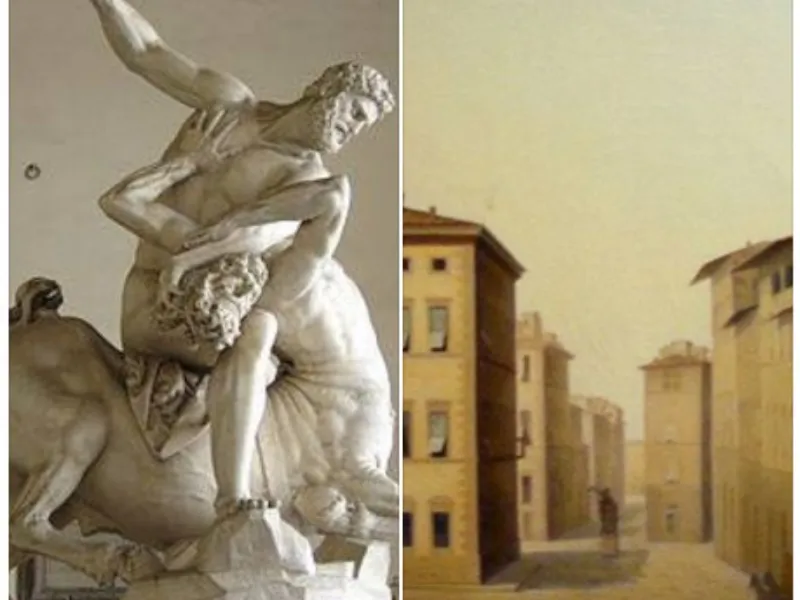
Hercoles and Nesso by Giambologna
A great governor needs intelligence but also energy and force to be at the head of a princedom.
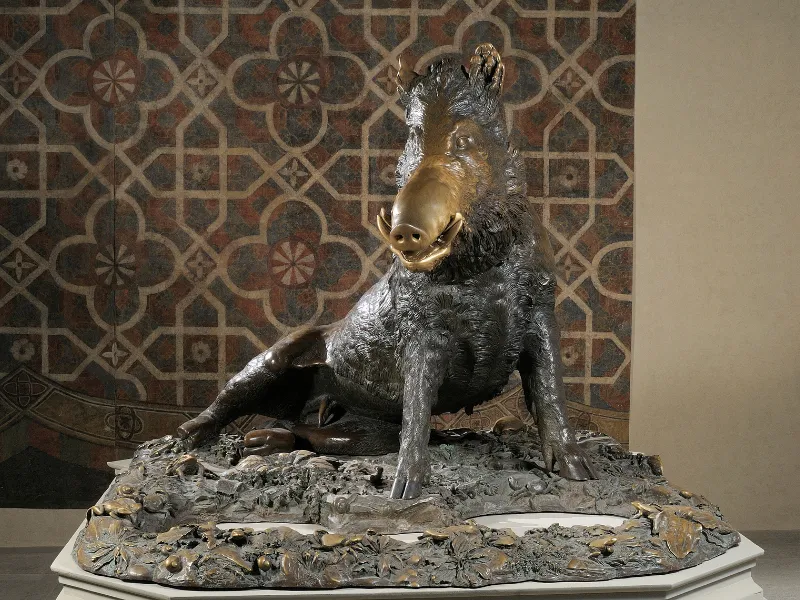
Stefano Bardini
Bardini was a promoter of the Renaissance myth in fact he contributed to the re-discovery of Florentine art.
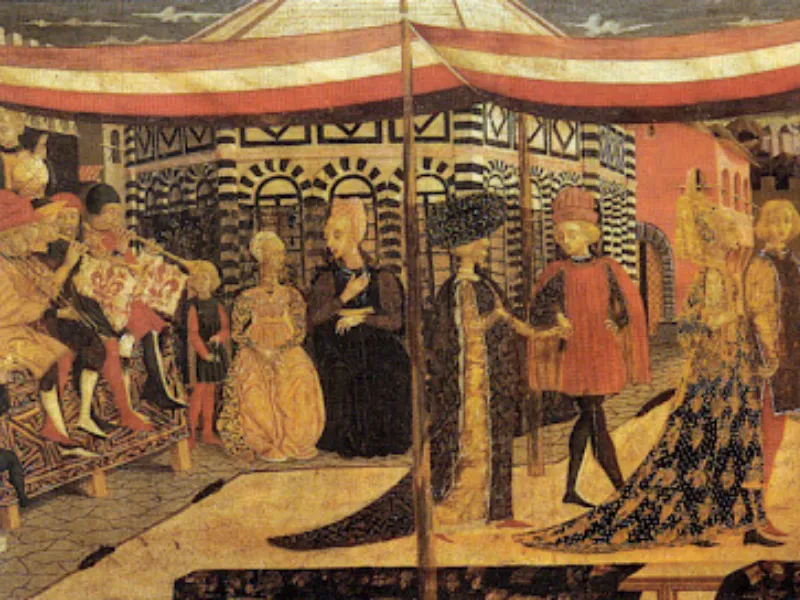
What is a 'Cassone Nuziale'
They usually were commissioned in pairs and filled with the dowry of the future wife.

